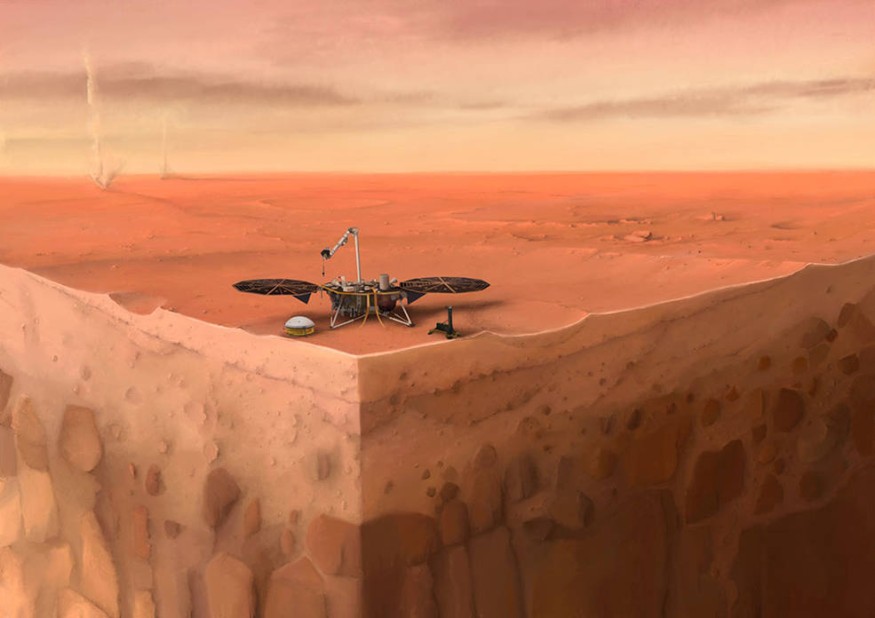Last Monday, NASA's Insight Mars lander detected a magnitude 5 earthquake on Mars, the biggest tremor yet recorded on another planet.
The announcement comes less than a week after the lander confirmed the magnitudes and locations of its previous strongest tremors. The magnitudes 4.1 and 4.2 happened in August and September 2021. The violent occurrence on May 4 has now displaced them.

NASA InSight Lander Detects Largest Earthquake From Another Planet
A magnitude 5 "marsquake" was recorded by InSight lander on Mars, the greatest one the spacecraft has felt since landing on the planet in November 2018, a statement from NASA's Jet Propulsion Laboratory (JPL) read Monday. The Verge said the latest detection is a watershed moment for InSight, as the spacecraft's solar panels continue to collect dust, which will eventually stop the vehicle's mission on Mars.
The earliest quakes felt by InSight were of a modest magnitude. The biggest marsquake the spacecraft has previously observed was magnitude 4.2. This newest 5-pointer, discovered on May 4 is still little compared to ones we occasionally experience on Earth, but NASA claims it's close to the strongest type of quake scientists expect to see on Mars. The record-breaking marsquake is 16 times stronger than the prior record.
According to Britannica, earthquakes of magnitude 4 to 5 are commonly felt but only inflict subtle damage. InSight was launched to Mars in 2018 to investigate the planet's core, mantle, and crust and the "marsquakes" that occur inside the planet.
Felt that one‼️
— NASA InSight (@NASAInSight) May 9, 2022
After more than three years of listening to the soft rumbles of Mars, I just felt by far my biggest “marsquake” yet: looks like about magnitude 5. My team is studying the data to learn more. Science rewards patience!
More details: https://t.co/DKVy8tUrxU pic.twitter.com/bExr13Lkvw
Since then, InSight has recorded over 1,000 quakes (per Gizmodo), but none as powerful as the one that occurred recently and was detected by the lander's seismometer. Last year, NASA scientists used InSight data to get the most comprehensive view into the planet's innards to date.
"Since we set our seismometer down in December 2018, we've been waiting for 'the big one," said Bruce Banerdt, InSight's principal investigator at JPL, Vice reported. "This quake is sure to provide a view into the planet like no other. Scientists will be analyzing this data to learn new things about Mars for years to come."
NASA InSight's Power Supply Drops
NASA InSight lander is currently in safe mode. Its power supply dropped below the threshold that activated its safety mode on Saturday, just days after it detected the biggest marsquake, Business Insider reported. With that, the non-essential operations, including science pursuits, are on hold for the second time this year.
Last winter on Mars, the lander lost so much power that NASA engineers forced it into slumber, turning off its research equipment for the season. Banerdt informed NASA's Mars Exploration Program Analysis Group at the time that the lander's mission would likely finish in April 2022, shortly after the start of the following winter.
All Mars robots are constantly exposed to dust. The red-brown powder threw the legendary Ingenuity chopper into a communications blackout for the first time last week in a crater to the west. Later that day, once the sun had risen and restored Ingenuity's batteries, NASA re-established contact with the drone. However, the event has put the helicopter into a power-saving mode similar to that of the InSight, shutting down non-essential operations in order to charge the battery.
If InSight fails to make it through the year, it will join the ranks of another high-tech Mars rover that cost NASA hundreds of millions of dollars yet perished in the dust. After a dust storm depleted its energy in 2018, the agency's Opportunity rover never powered back up.
Check out more news and information on Space in Science Times.
© 2025 ScienceTimes.com All rights reserved. Do not reproduce without permission. The window to the world of Science Times.












